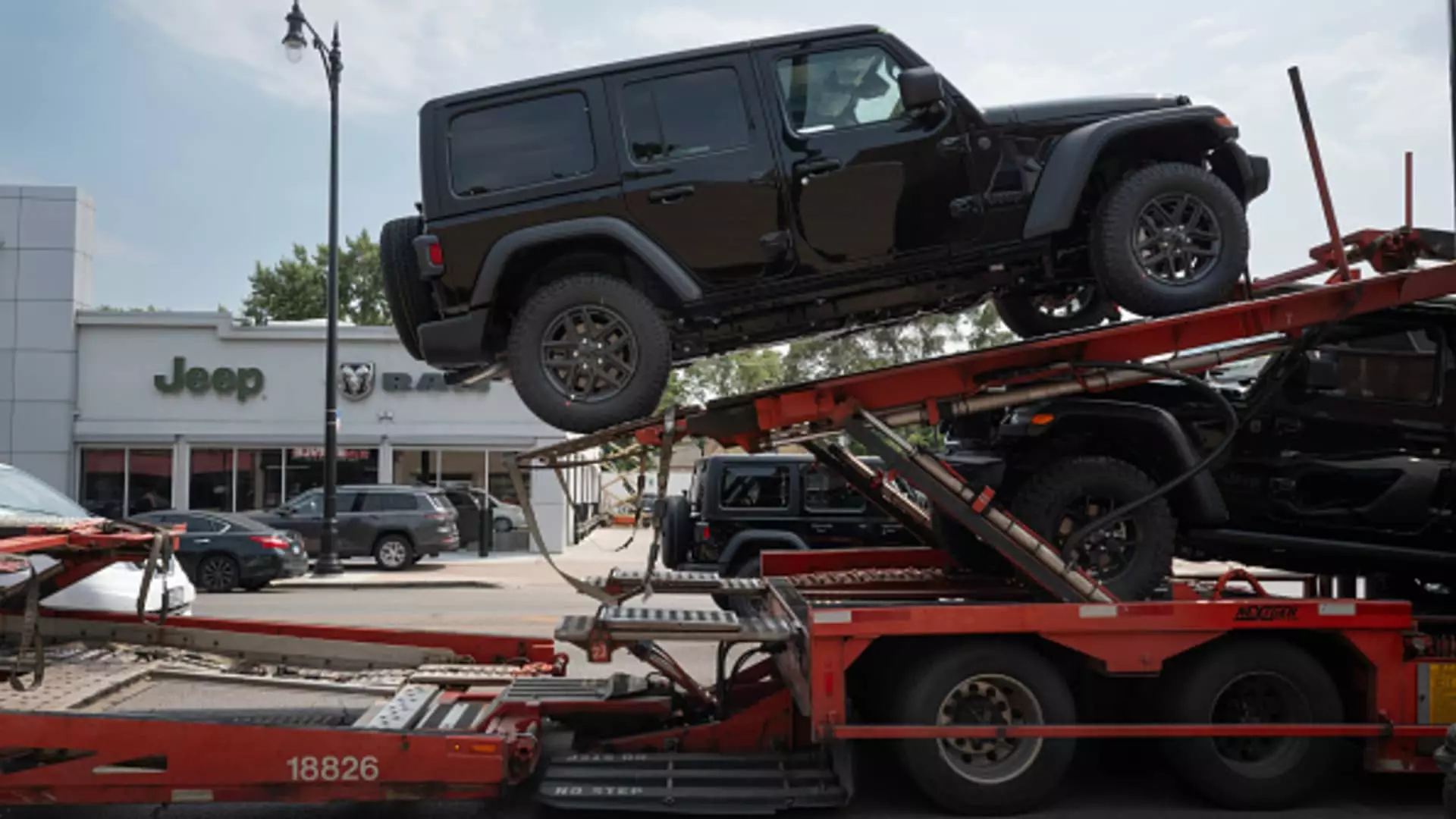Stellantis, the transatlantic automotive powerhouse, continues to grapple with significant sales challenges as it finds itself in a prolonged slump. During the third quarter of 2023, the company reported a striking 19.8% drop in U.S. vehicle sales, totaling only 305,294 units—a marked decline that adds to the woes faced by CEO Carlos Tavares. Despite acknowledging what he refers to as “arrogant” mistakes made within the organization, efforts to correct the course have thus far yielded limited results. This latest report places Stellantis in a precarious position, as industry forecasters, including Cox Automotive, anticipated it would be among the worst performers in terms of U.S. sales amongst major automakers.
While Stellantis experiences a downturn, the broader auto market is only forecasted to decline about 2% in the same timeframe, highlighting the severity of the company’s shortcomings. This discrepancy raises questions about Stellantis’s operational strategies and overall market adaptability.
Despite the grim sales figures, Stellantis has managed to report a slight increase in market share—from 7.2% to 8%—as well as a reduction in vehicle inventory by 11.6%. Matt Thompson, head of U.S. retail sales at Stellantis, noted that initiatives aimed at revitalizing sales and resolving previous errors are starting to produce tangible results. Nevertheless, such gains come against a backdrop of widespread sales declines across Stellantis brands, with Chrysler and Dodge experiencing more than 40% reductions in sales. The Ram truck brand was not far behind with a 19% decline, while Jeep, although down, fared slightly better with a mere 6% decrease.
The company is also bracing for the release of its 2025 models, signaling a commitment to future sales strategies that may stabilize performance in the longer term. However, analysts remain skeptical, given the entrenched nature of the current problems.
This week has been particularly bleak for Stellantis as it revised its profit margin forecast for 2024 downward and faced a recall concerning some of its popular plug-in hybrid electric Jeep models, cited for potential fire risks. Such developments further erode investor confidence, with the company’s shares plummeting 41% year to date. In fact, the stock hit a new low of $13.71, which reflects a 2.4% drop for the day.
The decline of Stellantis’s stock price mirrors the company’s downward trajectory in U.S. sales, which have been consistently decreasing since reaching a peak of 2.2 million vehicles sold in 2018. The last recorded sales figure of over 1.5 million vehicles in 2022 represented a slight decline from the previous year, contrasting sharply with the booming growth rate of the wider U.S. light-duty vehicle sales market.
In recent communications with investors, Tavares attributed Stellantis’s struggles to a trio of interlinked issues: an inability to manage vehicle inventories effectively, manufacturing challenges at key plants, and outdated market strategies. His declaration to amend the “arrogant” oversights has generated considerable scrutiny, particularly as the United Auto Workers union and Stellantis’s franchised dealers express discontent with the current focus on profitability over market share.
Tavares’s strategy, seemingly oriented towards maximizing profits and refining pricing strategies, has not resonated well within the industry, especially as competitors adapt more dynamically to changing consumer preferences. As Stellantis seeks to correct its course, the path ahead may require a balanced approach that prioritizes both financial sustainability and consumer engagement.
Stellantis is undeniably at a critical juncture, confronting myriad challenges as it navigates steep sales declines and operational setbacks. The performance of the next few quarters will be crucial in determining whether the automotive giant can effectively leverage its market share gains and inventory management initiatives to reverse its fortunes. While the carmaker possesses the potential to rebound, it must decisively address its internal inefficiencies and reconsider its overarching strategies to remain relevant in an increasingly competitive automotive landscape.


Leave a Reply